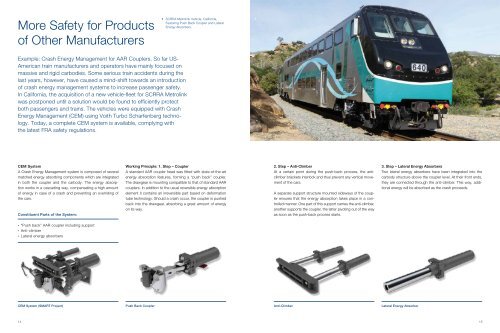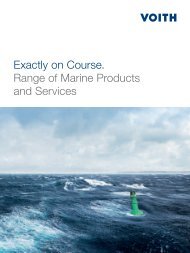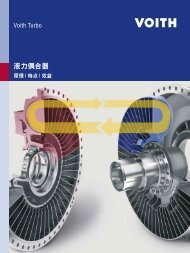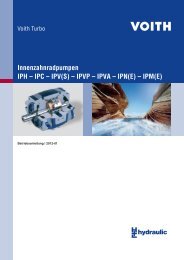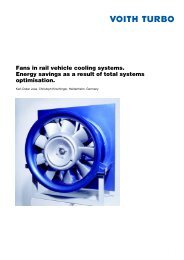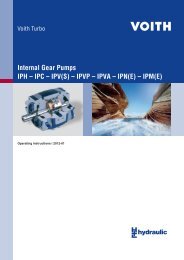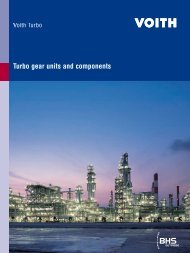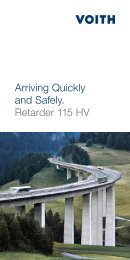Connect and Protect. Coupler and Front End Systems - Voith Turbo
Connect and Protect. Coupler and Front End Systems - Voith Turbo
Connect and Protect. Coupler and Front End Systems - Voith Turbo
Create successful ePaper yourself
Turn your PDF publications into a flip-book with our unique Google optimized e-Paper software.
More Safety for Products<br />
of Other Manufacturers<br />
Example: Crash Energy Management for AAR <strong>Coupler</strong>s. So far US-<br />
American train manufacturers <strong>and</strong> operators have mainly focused on<br />
massive <strong>and</strong> rigid carbodies. Some serious train accidents during the<br />
last years, however, have caused a mind-shift towards an introduction<br />
of crash energy management systems to increase passenger safety.<br />
In California, the acquisition of a new vehicle-fleet for SCRRA Metrolink<br />
was postponed until a solution would be found to efficiently protect<br />
both passengers <strong>and</strong> trains. The vehicles were equipped with Crash<br />
Energy Management (CEM) using <strong>Voith</strong> <strong>Turbo</strong> Scharfenberg techno-<br />
logy. Today, a complete CEM system is available, complying with<br />
the latest FRA safety regulations.<br />
CEM System<br />
A Crash Energy Management system is composed of several<br />
matched energy absorbing components which are integrated<br />
in both the coupler <strong>and</strong> the carbody. The energy absorp-<br />
tion works in a cascading way, compensating a high amount<br />
of energy in case of a crash <strong>and</strong> preventing an overriding of<br />
the cars.<br />
Constituent Parts of the System:<br />
• “Push back” AAR coupler including support<br />
• Anti-climber<br />
• Lateral energy absorbers<br />
CEM System (SMART Project) Push Back <strong>Coupler</strong><br />
Anti-Climber<br />
Lateral Energy Absorber<br />
14<br />
1 SCRRA Metrolink Vehicle, California,<br />
Featuring Push Back <strong>Coupler</strong> <strong>and</strong> Lateral<br />
Energy Absorbers.<br />
Working Principle: 1. Step – <strong>Coupler</strong><br />
A st<strong>and</strong>ard AAR coupler head was fitted with state-of-the-art<br />
energy absorption features, forming a “push back” coupler.<br />
The drawgear is mounting compatible to that of st<strong>and</strong>ard AAR<br />
couplers. In addition to the usual reversible energy absorption<br />
element it contains an irreversible part based on deformation<br />
tube technology. Should a crash occur, the coupler is pushed<br />
back into the drawgear, absorbing a great amount of energy<br />
on its way.<br />
1<br />
2. Step – Anti-Climber<br />
At a certain point during the push-back process, the anti-<br />
climber brackets interlock <strong>and</strong> thus prevent any vertical movement<br />
of the cars.<br />
A separate support structure mounted sideways of the coupler<br />
ensures that the energy absorption takes place in a con-<br />
trolled manner. One part of this support carries the anti-climber,<br />
another supports the coupler, the latter pivoting out of the way<br />
as soon as the push-back process starts.<br />
3. Step – Lateral Energy Absorbers<br />
Two lateral energy absorbers have been integrated into the<br />
carbody structure above the coupler level. At their front ends,<br />
they are connected through the anti-climber. This way, additional<br />
energy will be absorbed as the crash proceeds.<br />
15


